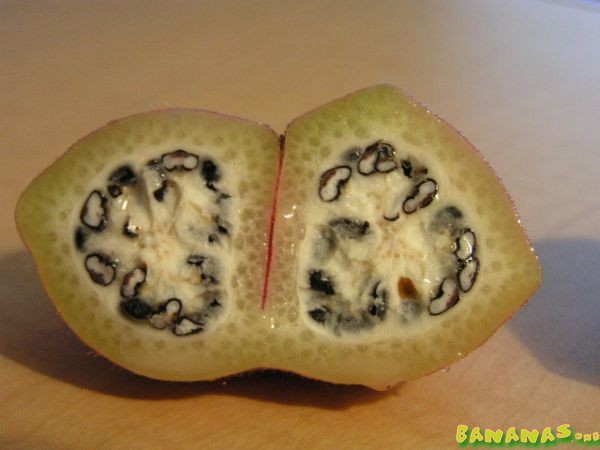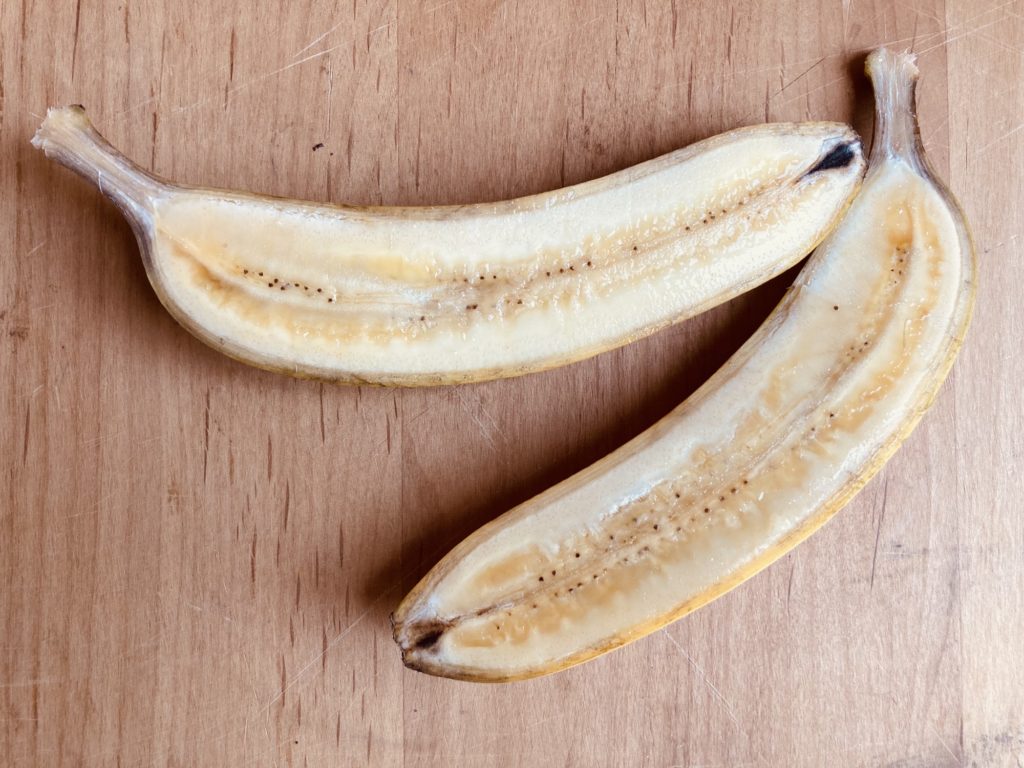Have you ever wondered if wild bananas are edible? I too wondered this when I started to grow bananas, and went searching for the answer.
In general most, if not all wild bananas are edible, and our common edible bananas came from wild bananas. What are commonly referred to as “edible bananas” are bananas that produce fruit while at the same time having few, or no seeds.
Lets take a look at wild bananas and their fruit, and how they differ from edible bananas, and why we as humans don’t eat them. At least not very often.
Wild Bananas Have Seeds.

Wild bananas have seeds, and lots of them. Some have so many seeds that the interior of the fruit is almost completely filled with seeds. All the banana seeds I have experienced have been rock hard, and in fact they look a little bit like rocks.
So eating a wild banana would require a great deal of effort to separate the seeds from the flesh. After the flesh and seeds are separated there would also be very little flesh to eat.
Why don’t edible bananas have seeds?
The bananas that are purchased in stores in the U.S. are almost always the cavendish variety and they are seedless. If you have ever eaten a cavendish variety you will know that inside the banana running down the center are little black dots. Many of you may be thinking these are seeds, but they are in fact aborted ovules. It is where a seed would form, but in edible varieties they do not form, or it is very rare if they do.
Bananas are seedless for a combination of reasons. Some people presume that bananas are seedless because humans bred them that way. While there are some bananas that have been bred, like the Goldfinger (FHIA-01) banana, most are not bred. It took decades of breeding and selecting, by scientists and researchers just to get that one variety. There are hundreds of varieties of bananas and most of them have simply been selected by the people growing them.
The seedless nature of bananas is not caused by the number of chromosomes in each set, or at least not solely. For reference, each set of chromosomes that humans have contain two (a pair) chromosome copies, one from mom and one from dad, with a total of 23 pairs, or sets.
Plants can have more than two copies and many edible plants do have more than two copies, like strawberries for example. Have you ever wondered why some strawberries are so big, some of it is the number of chromosome copies they have.
More copies can make the fruit and plant bigger and hardier. Many bananas are seedless and have 2-4 sets of chromosomes. Sucrier bananas have 2 sets, Cavendish have 3 and the Goldfinger has 4.
The seedless nature of edible bananas came with time. Over time people noticed that some banana plants produce fruit with less seeds, or no seeds, and they keep those plants to grow again. Who doesn’t love seedless fruit?
What is it exactly that makes bananas produce fruit without a seed though? Some bananas can be parthenocarpic, which means they can produce fruit without being pollinated. If the plant is parthenocarpic and fertile, they can still have seeds if it is pollinated. So it appears that parthenocarpy can not be the answer alone, some of the plants would also need to become sterile in some way. This may happen through mutation or crossing with other bananas where the combination of genes caused sterility.
You can read more about the parthenocarpic nature of bananas at promusa.org
Do wild bananas taste good?
While some wild bananas taste good, some may taste awful. Musa Velutina is reported to have a nice flavor, as well as Musa Yunnanensis. There are so many wild bananas and some will taste good and others won’t. Texture is an important factor as well. It might not be enjoyable if a banana had the texture of Styrofoam even if it tasted great.
Where did edible bananas come from?
Most bananas that we eat today that are seedless come from two banana species, Musa Acuminata and Musa Balbisiana. Many are hybrids of the two and others are only acuminata or balbisiana.
There are more species of wild bananas that edible bananas descended from, like the Fe’i banana which descended from another section of the genus Musa, called Callimusa.

The Fe’i bananas are a very unique edible variety. They generally have orange flesh fruit with a high carotene content, and the bunches grow straight up and aren’t hanging to the side like common bananas. They also have a trait that may be unique among bananas in general that when cut, they ooze a blue/purple sap.
More genetic testing in the future will help us understand even more where bananas came from and where they are going.
How do bananas grow without seeds?
After all that, some of you may be wondering how exactly edible bananas are grown if they don’t have seeds. Bananas produce offshoots called suckers or pups, and this allows people to keep a banana they like without having seeds to plant. In fact, seeds will not even give you the exact same plant, as most offspring are not exactly the same as the parent. The suckers on the other hand are identical, unless there is a mutation.

